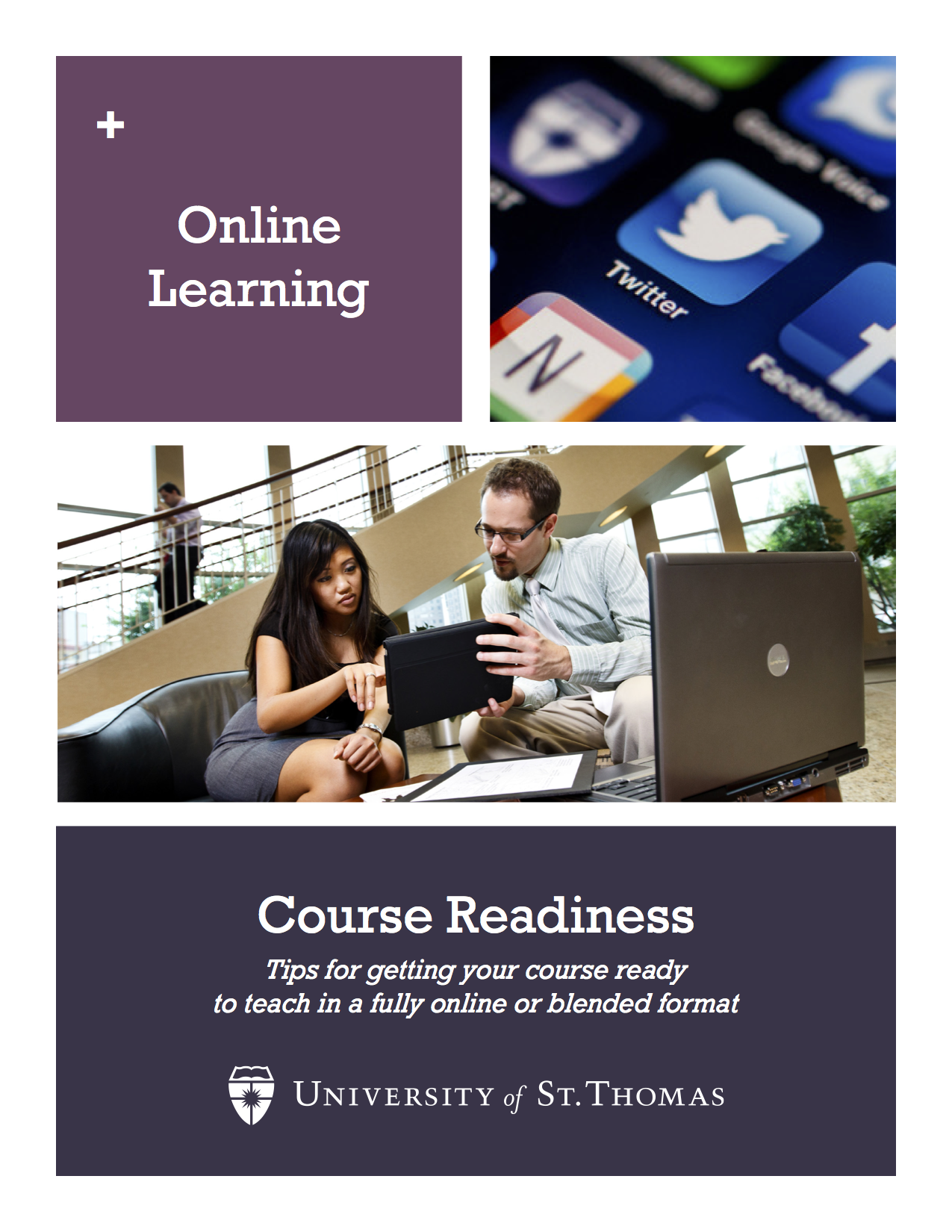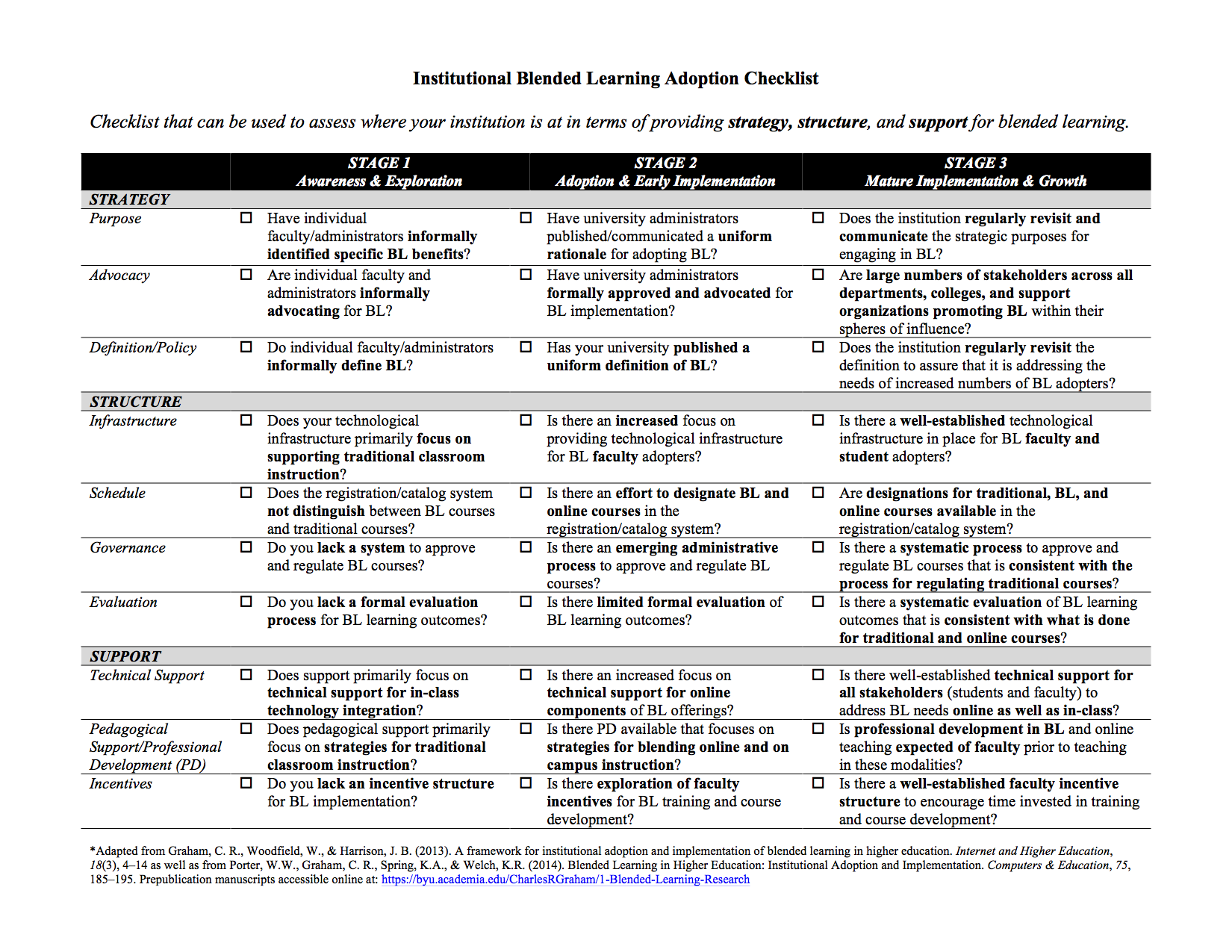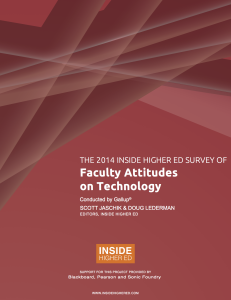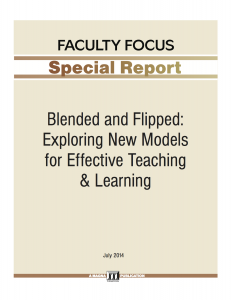The University of St. Thomas Information Resources and Technologies and Faculty Development Center have created this excellent guide for faculty on how to structure a course for online learning and addresses both fully online and blended/hybrid delivery methods. There is a checklist at the end of the booklet to assess your “course readiness,” and to help minimize any problems your students may incur as they acclimate to the online material, navigate the course and complete online activities.
Also included is assistance for incorporating active learning strategies to help you plan your class time more efficiently and to assess where students are in understanding the material. Lastly, the basic tenets of how to design for accessibility, especially if you are using the Blackboard learning management system, are introduced.





